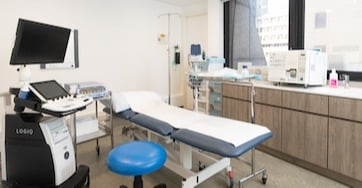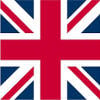What temperature counts as a fever? Fever in babies can be worrying, but understanding the causes and taking the proper precautions can help keep your little one safe. Fever is a natural immune system response to fight infections like the common cold. Common childhood illnesses like chickenpox, tonsillitis, and vaccinations can cause fever.
Our paediatrician, Dr Chantel Ng, gave some essential tips for parents on managing fever in young children. Prevent panic by reading the blog to know what you can do when your baby has a fever.
Causes of Fever in Babies
Fever is a normal reaction of an infant’s body to fight infections and is part of the immune system’s response. An elevated body temperature indicates the body is combating a disease or other health issue.
Viral Infections
Viral infections are the most common cause of fever in babies. When a virus enters the body, the immune system activates, and fever is part of this process. Common viral infections include:
- Common Cold: Caused by viruses like rhinoviruses, often accompanied by symptoms such as a runny nose and cough
- Influenza: Caused by the flu virus, symptoms include high fever, muscle aches, and fatigue
- Enterovirus: Common in summer, it can cause illnesses like hand, foot, and mouth disease, accompanied by fever and rashes in the mouth and on limbs
- Respiratory Syncytial Virus (RSV): Can lead to severe respiratory infections like bronchiolitis and pneumonia, particularly dangerous for infants and young children
Bacterial Infections
Bacterial infections are another common cause of fever in babies and require prompt treatment. Common bacterial infections include:
- Urinary Tract Infections (UTIs): Can cause fever, irritability, and abnormal urine
- Pneumonia: Symptoms include persistent high fever, cough, and difficulty breathing
- Otitis Media: Symptoms include fever, ear pain, and irritability
Other Causes of Fever
- Reactions to Vaccinations
- Adverse drug reactions
- Inflammatory diseases
How to Tell if Your Baby Has a Fever?
Is 38°C considered a fever? The normal human body temperature is around 37°C. A temperature of 38°C or higher indicates a fever, signaling that the immune system is fighting an infection.
The measurements for fever in children may vary slightly depending on the type of thermometer and the body part being measured.
|
Measurement Site |
Fever Temperature |
Accuracy |
|
Oral |
> 37.5°C |
*** |
|
Rectal |
> 38°C |
*** |
|
Ear |
>38°C |
*** |
|
Armpit |
> 37.3°C |
** |
|
Forehead |
> 36°C |
* |
Resources from: Ming Pao
Signs Your Child May Have a Fever:
- Their forehead, back, or stomach feels warmer than usual
- They are sweating or have cold, clammy skin
- Their cheeks are flushed
If you suspect your child has a fever, it’s best to use a thermometer to confirm. If your young baby has a fever, contact a paediatrician immediately.
How to Properly Measure a Child’s Temperature?
For babies under 3 months old, oral and forehead thermometers are not accurate, and infrared ear thermometers are not recommended until 6 months of age. Dr Chantel Ng suggests using an armpit thermometer for babies under 3 months as it’s the safest method. While rectal thermometers are more accurate, there’s a risk of injuring the infant’s intestines, so parents should use them cautiously and apply a small amount of lubricant to the tip. Whether using a rectal or armpit thermometer, disinfect the tip with 70% alcohol before and after use.
Tips for Using Infrared Ear Thermometers:
- For babies under 1 year old, gently pull the ear straight back.
- For children over 1 year old, pull the ear back and upward.
When to See a Doctor for Your Baby’s Fever
Seek immediate medical attention if any of the following occur:
- The fever persists for more than 3 days, is high (> 39°C), and is accompanied by symptoms like cough, vomiting, or seizures.
- The infant is under 3 months old.
- Children aged 3 to 6 months have a temperature of 39°C or higher.
- The child develops a rash.
- They have difficulty breathing.
- They appear lethargic or unusually tired.
- They are vomiting or have reduced urination.
- Seizures.
Many misconceptions surround fever in babies and children, such as "sweating it out" by bundling them up or avoiding fever-reducing medication. We’ll address these common misconceptions in another article.

Dr Chantel Ng
- MBChB (CUHK)
- MRCPCH
- FHKCPaed
- FHKAM (Paediatrics)
- DCH (International) (RCPCH)
- DCH (HK) (HKCPaed)
- PgDipPD (Cardiff)
- MScPD (Cardiff)
Health Articles by Dr Chantel Ng
References
1. NHS. (2020). High temperature (fever) in children. Retrieved November 25, 2022, from https://www.nhs.uk/conditions/fever-in-children/
2. NHS. (2020). How to take your baby's temperature. Retrieved November 25, 2022, from https://www.nhs.uk/conditions/baby/health/how-to-take-your-babys-temperature/
3. 衞生署. (2021). 親職系列4 —— 發燒的護理. Retrieved November 25, 2022, from https://www.fhs.gov.hk/tc_chi/health_info/child/14743.html
4. 明報OL網. (2020). 發燒標準:幾度先算發燒?. Retrieved November 25, 2022, from https://ol.mingpao.com/ldy/beautystyle/fitness/20200824/1598208726664/發燒標準-幾度先算發燒
5. 明報健康網. (2019). 小朋友發燒成因多 注意異常反應 盡早求醫. Retrieved November 25, 2022, from https://health.mingpao.com/小朋友發燒成因多-注意異常反應-盡早求醫/
6. 羅東博愛醫院. 高燒不退?!小心川崎氏症!Retrieved May 23, 2024, from https://www.pohai.org.tw/health_detail.php?PKey=831
7. 台灣小兒神經醫學會. 腦膜炎及腦炎. Retrieved May 23, 2024. from https://www.tcns.org.tw/OnePage.aspx?tid=32&id=164
8. Mayo Clinic. Retrieved May 23, 2024. Fever. from https://www.mayoclinic.org/diseases-conditions/fever/symptoms-causes/syc-20352759
9. HelloDoctor. What Are Normal Pediatric Vital Signs? An Essential Guide for Parents. Retrieved May 23, 2024. from https://hellodoctor.com.ph/parenting/child-health/common-symptoms-and-conditions/bring-down-fever-in-child/
10. Verywell Health. All Kinds of Fever Reducers. Retrieved May 23, 2024. from https://www.verywellhealth.com/fever-reducers-7499319
 Central General Practice
Central General Practice
 Repulse Bay
Repulse Bay
 Clearwater Bay
Clearwater Bay
 BodyWorX Clinic
BodyWorX Clinic
 Central Specialist Clinic
Central Specialist Clinic
 MindWorX Clinic
MindWorX Clinic
 Partner Clinics
Partner Clinics
 Family Clinic
Family Clinic
 OT&P Annerley Midwives Clinic
OT&P Annerley Midwives Clinic










.png?length=500&name=%5BMKT%5DWebsite%20Blog%20Photo%20(1).png)


